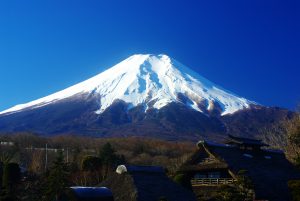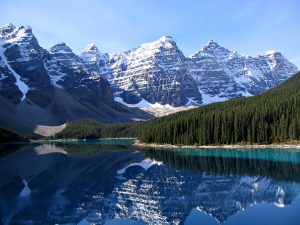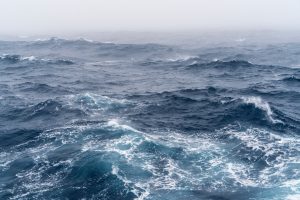There was a sale on audio books, so I am listening to a Great Courses lecture series called Understanding Complexity by Scott E. Page. I thought it would be nice to have an introductory overview of what other disciplines mean when they talk about complexity.
Early on, Page introduces a lovely metaphor. If we are willing to map outcomes onto landscapes, he suggests there are three kinds of landscapes that model problems. The idea is that better outcomes are the equivalent to higher peaks.

[Mt Fuji – Wikipedia]
Mt Fuji landscapes are essentially conical. No matter where you are, it’s clear where you need to go to climb higher. Simple optimization problems are Mt Fuji landscapes.

[Rocky Mountains – Wikipedia]
Rugged landscapes are ones where the tallest peak is not self-evident. It takes some searching to find the highest. The Rockies are rugged landscapes. It took a long time to be sure that Mount Elbert was the highest. Difficult challenges like building a nuclear bomb are rugged landscape problems. You need to invest a lot of time and effort into the search, but there is an answer and you will eventually find it. Along the way, you might find lots of good-enough answers.
This is a useful metaphor for explaining to practically minded people why it’s something useful to suspend some of the constraints of reality when conducting a search. It’s easier to explore a rugged landscape if you can temporarily suspend gravity, even if—in the end—you’ll need to respect it and climb the mountain once you’ve found it.
Page offers a third landscape in the metaphor. He calls them dancing landscapes.
Dancing landscapes change over time. The maxima and minima keep moving in response to all kinds of forces including your own attempts to move in them. Page struggles to describe this in terms of moving landmasses. I think the ocean is a better image.

[Ocean Waves – Wikimedia Commons]
He argues that complex adaptive systems are best understood as dancing landscapes. This means, amongst other things, that time is of the essence when attempting to intervene. What is a good idea now will not necessarily be a good idea later because conditions will change. He says that it’s why attempts to reform things are best done quickly.
I’ve been thinking a lot about this last point because it bolsters an idea that we hold but haven’t been great at defending: That longer time spent on research does not necessarily produce better results. I think this idea drives things like the DPPS being a 5 day encounter. We know that longer time periods don’t necessarily mean better outcomes. On the other hand, we know that all too often emergency is used as an excuse to force bad ideas through. I think that the idea of dancing landscapes gives us some tools to distinguish our approach from the irresponsibly urgent approach.
I think we could extend the metaphor by describing how to equip ourselves to navigate dancing landscapes.
– Written by Tim Maly. February 5 2020.
